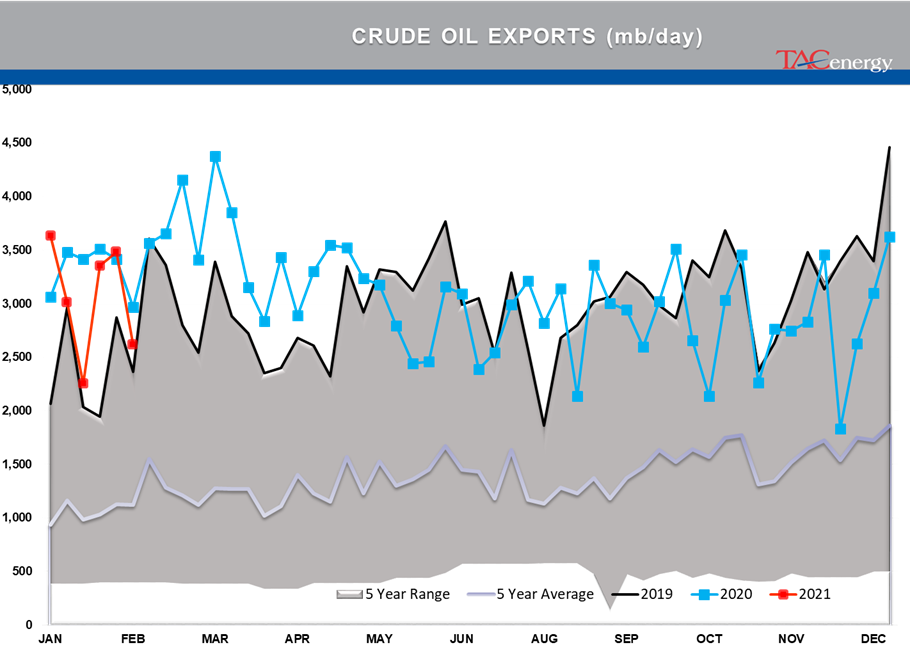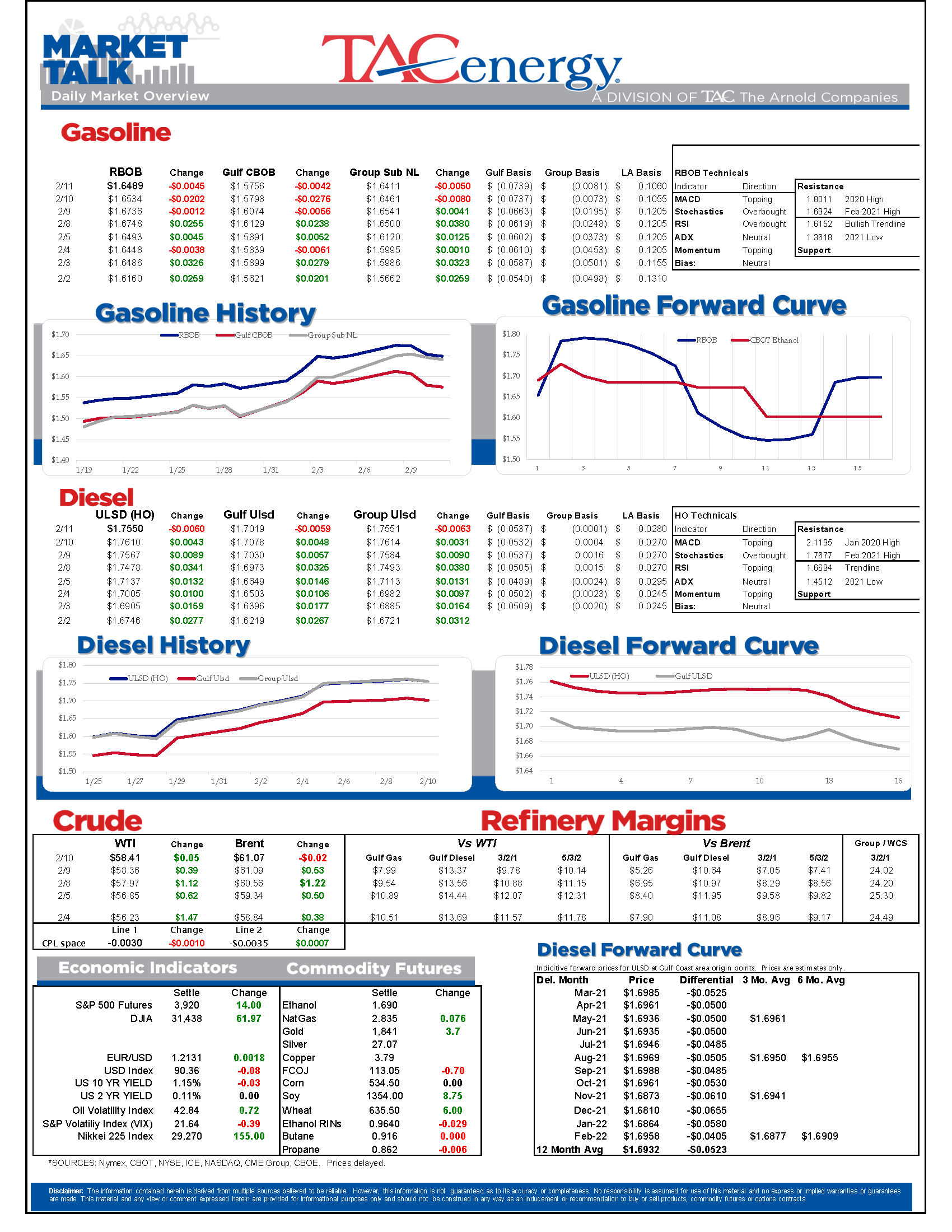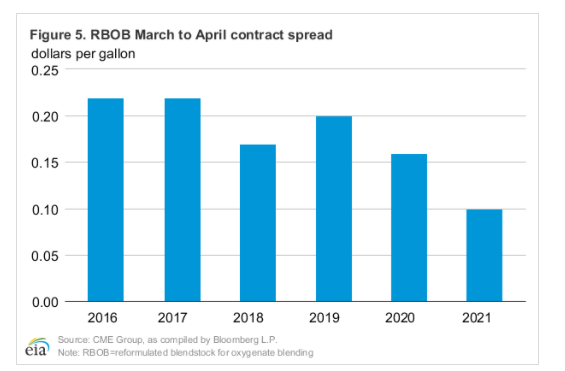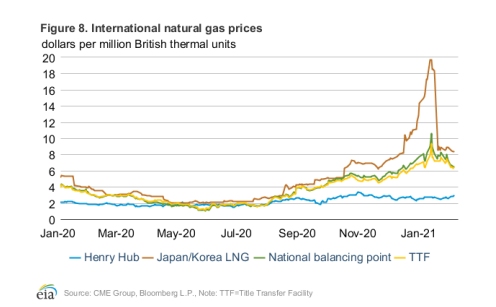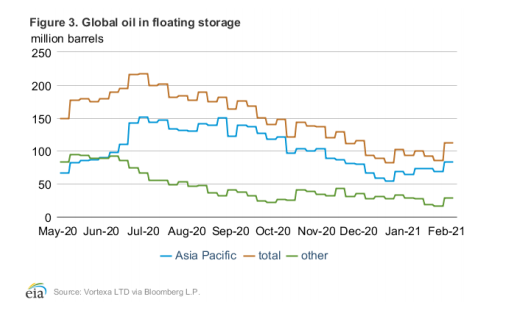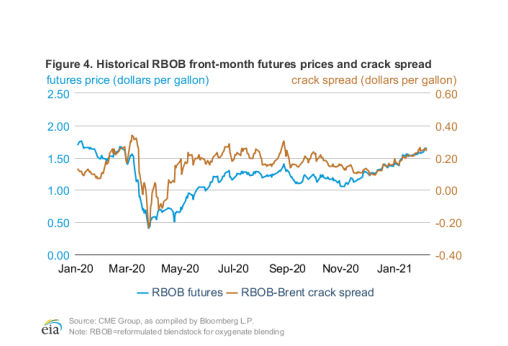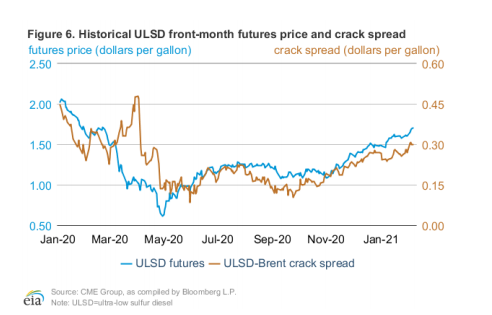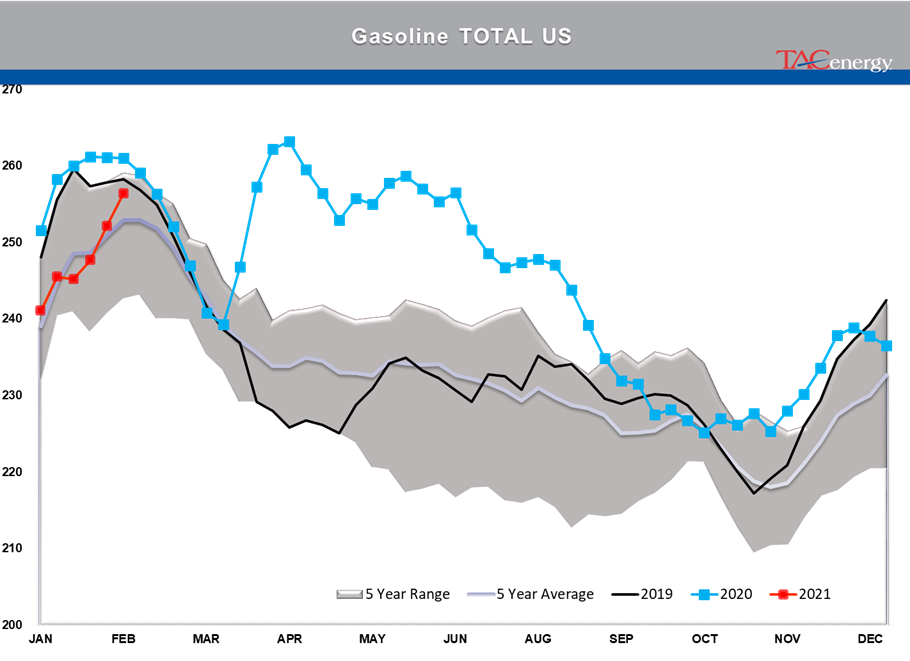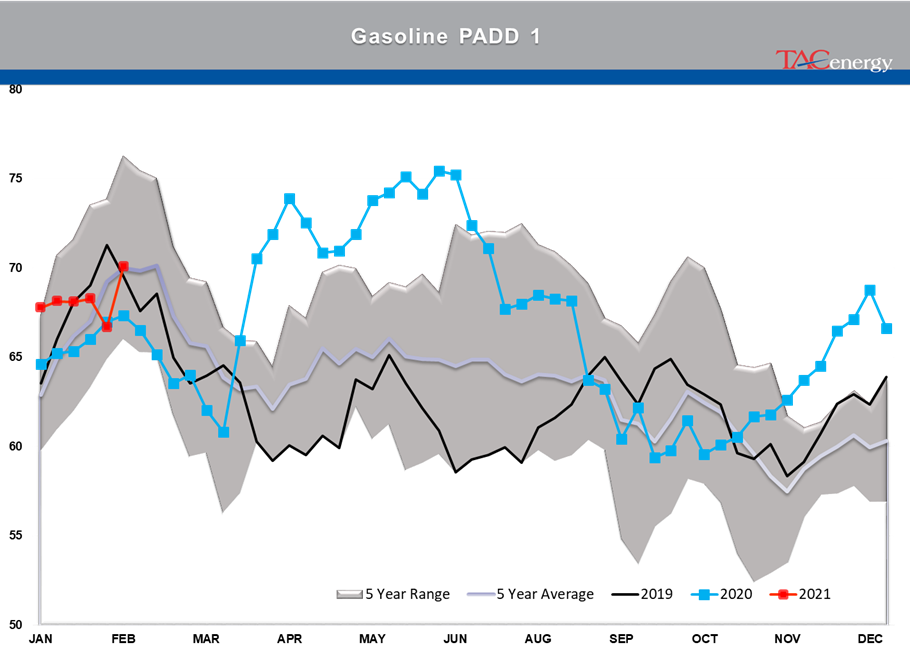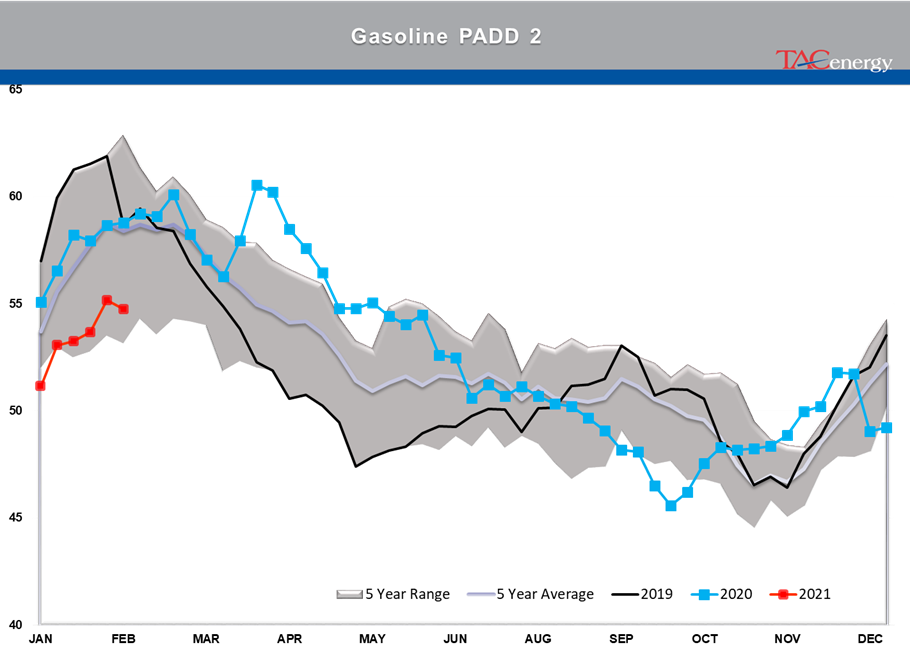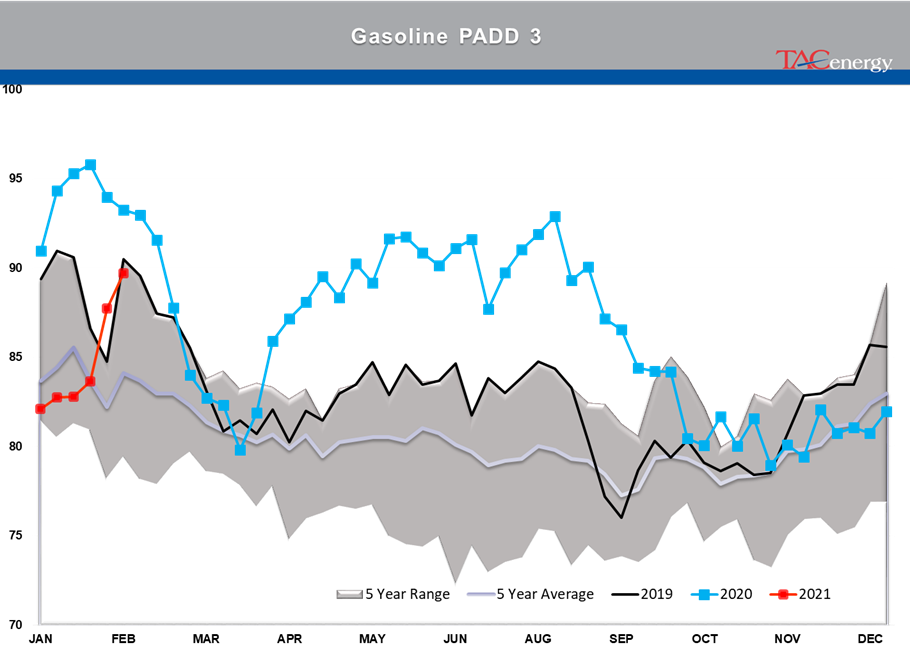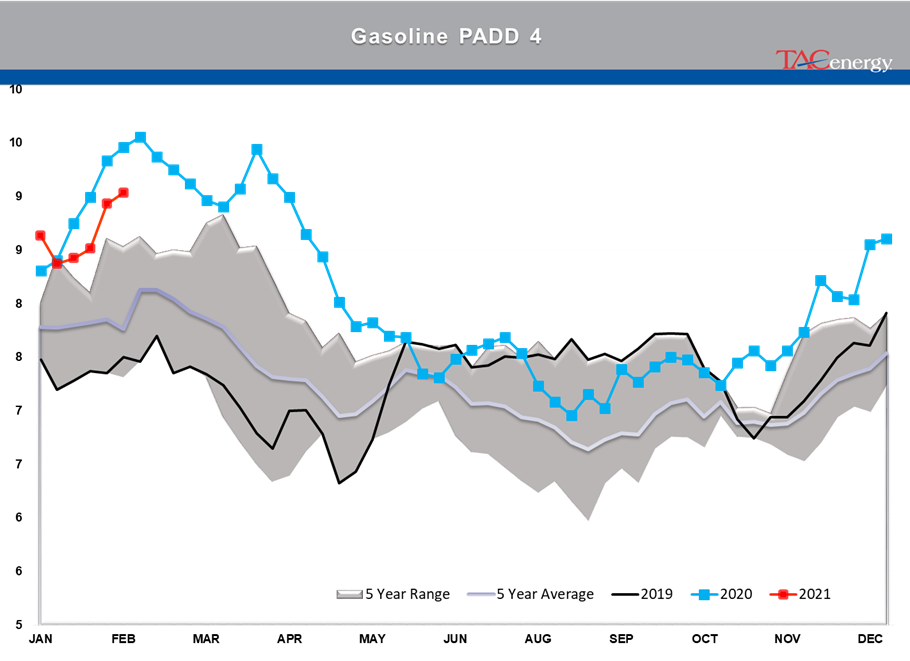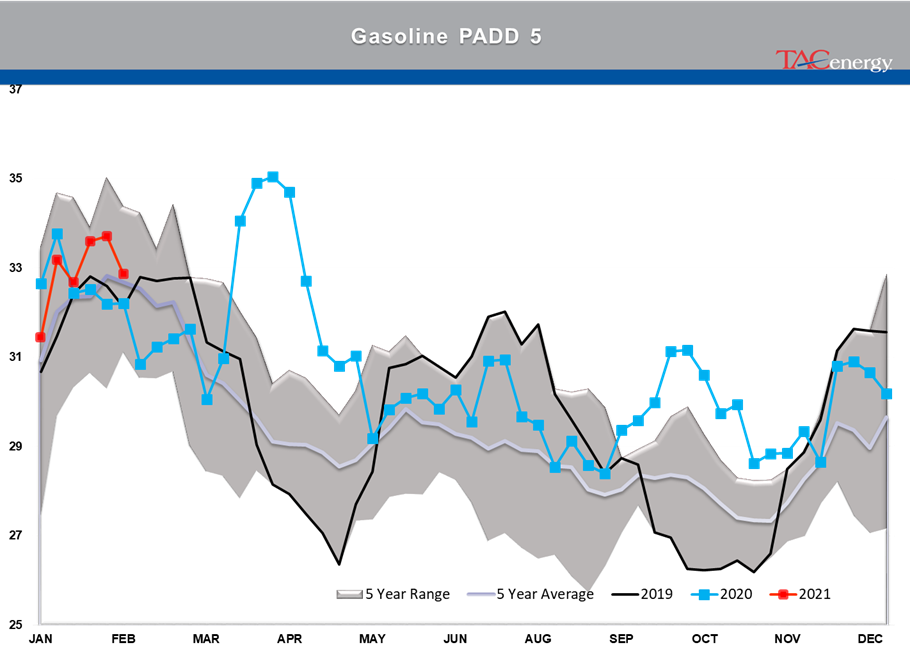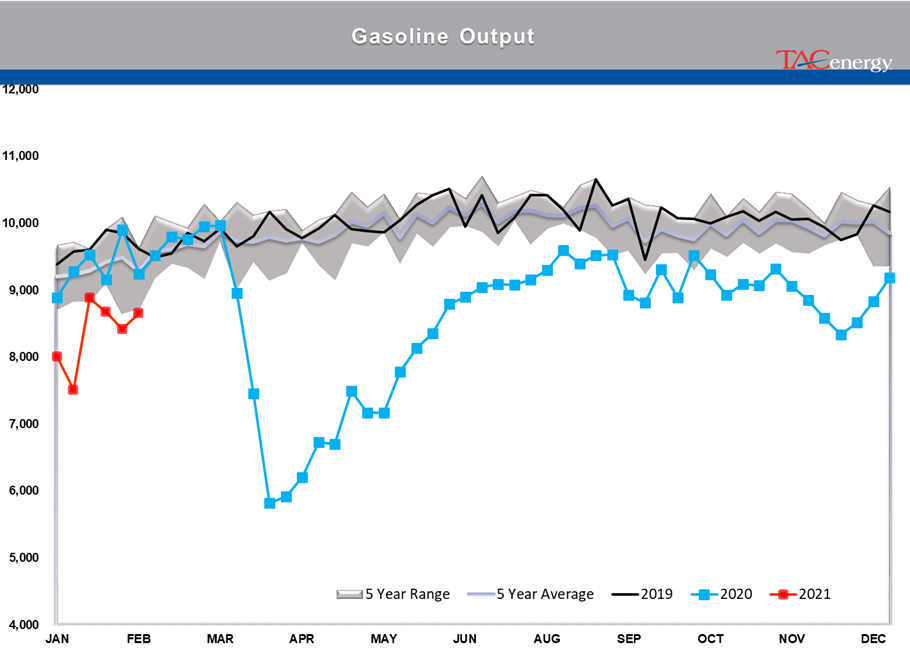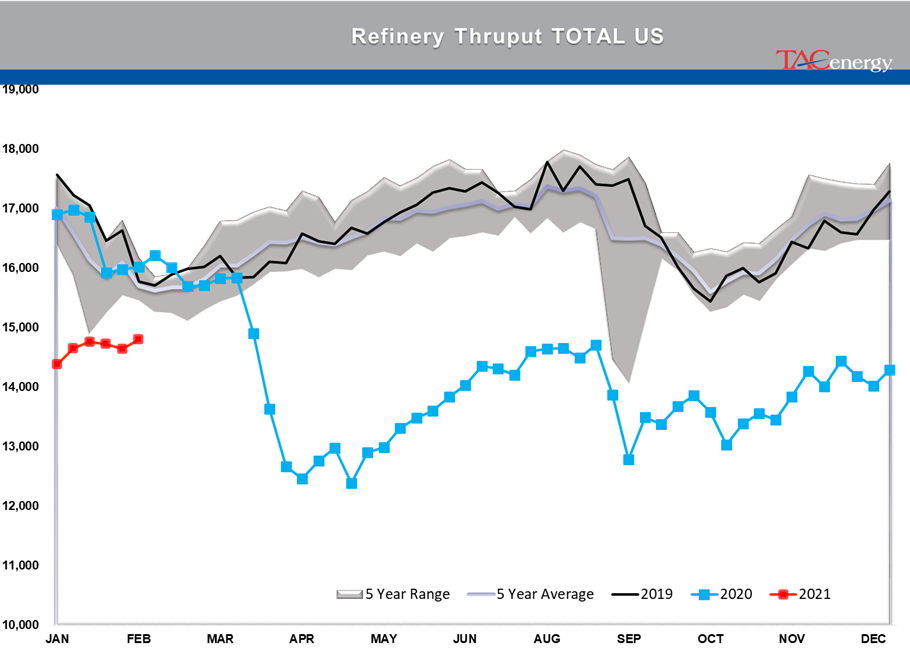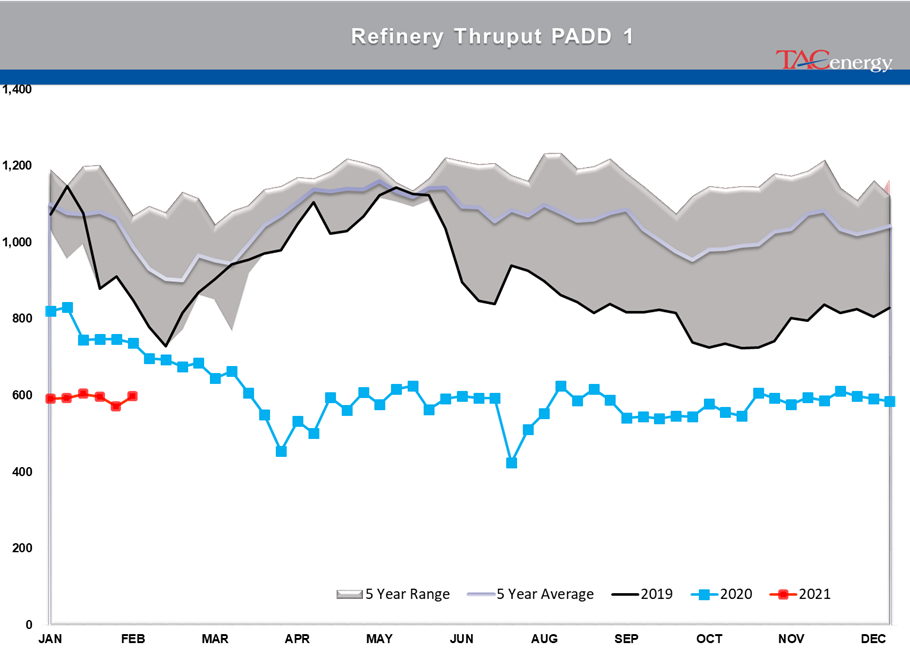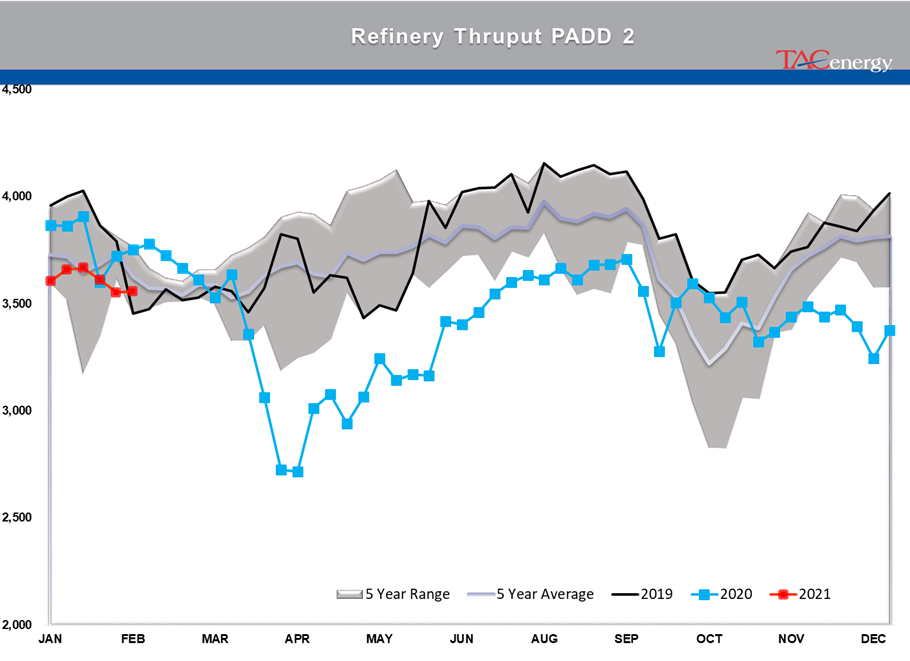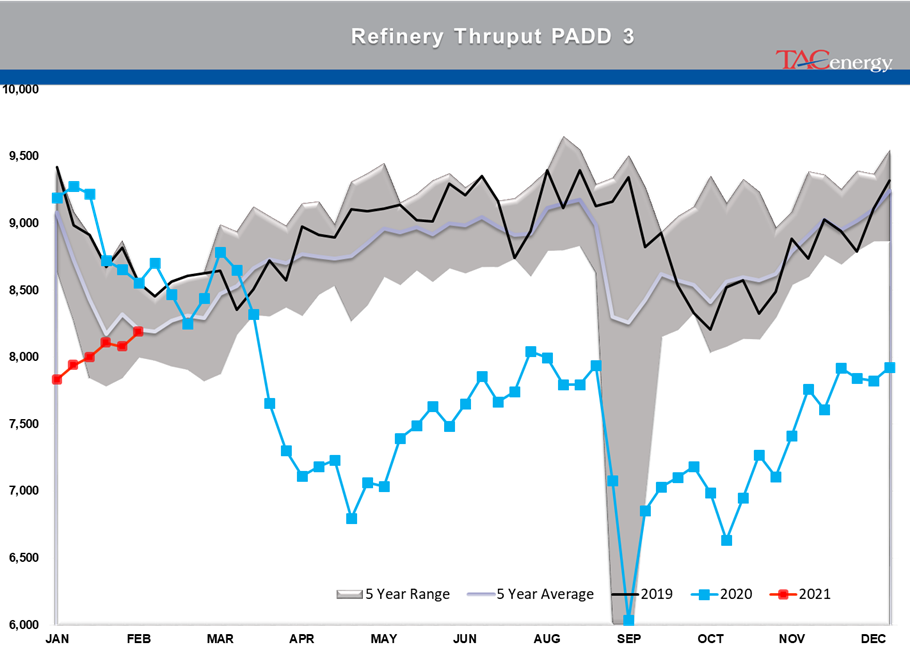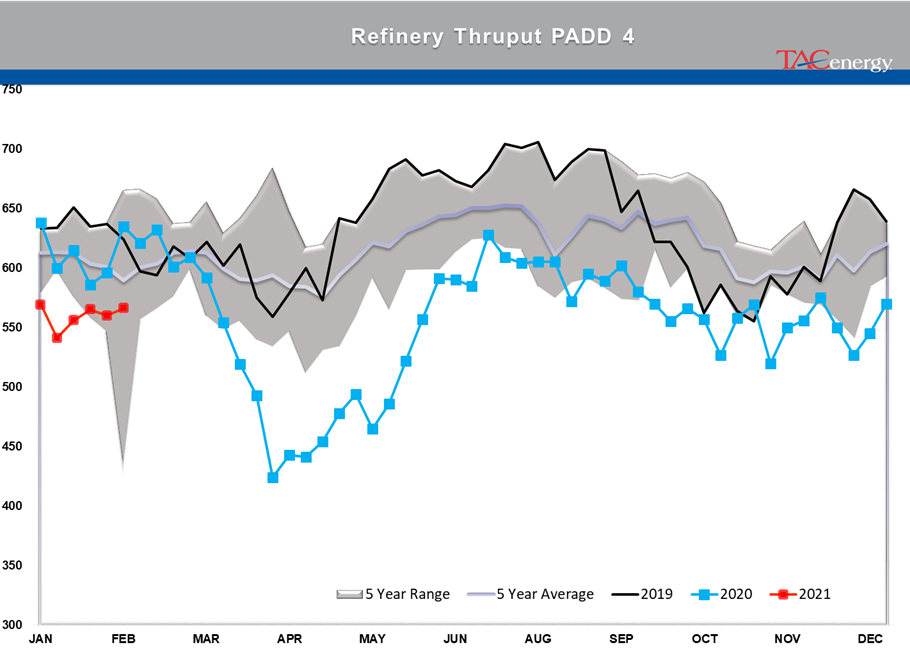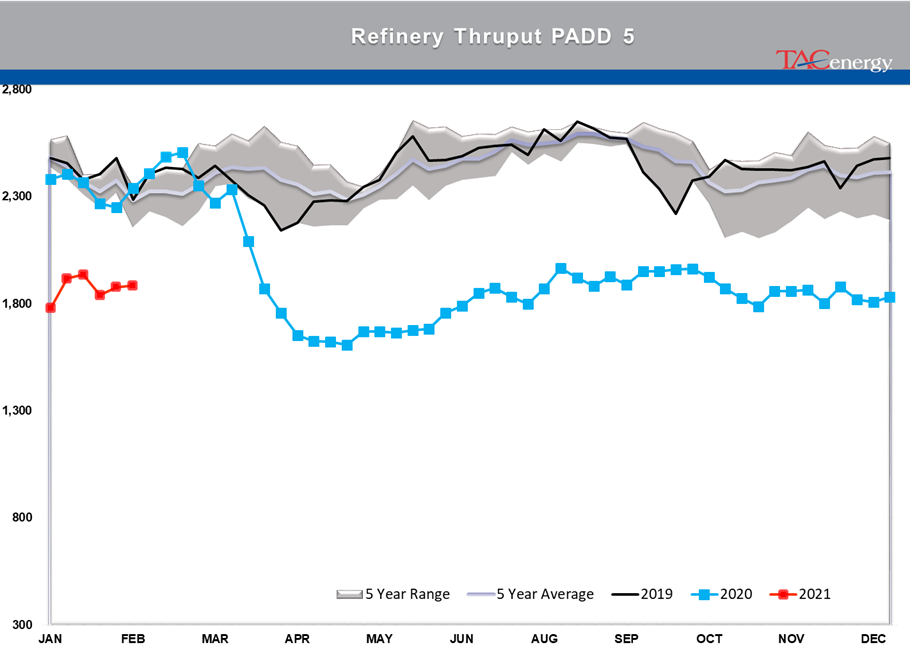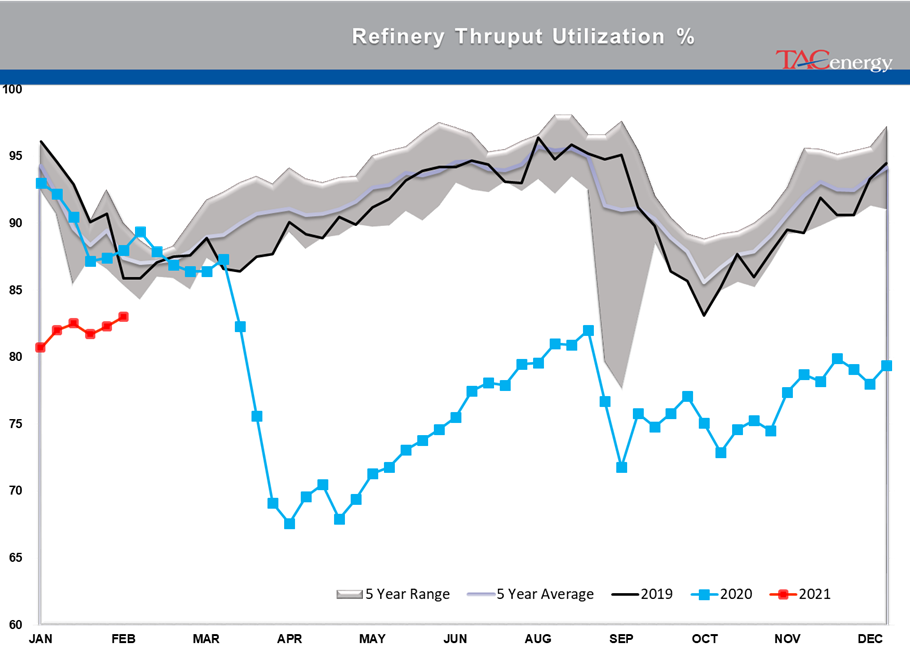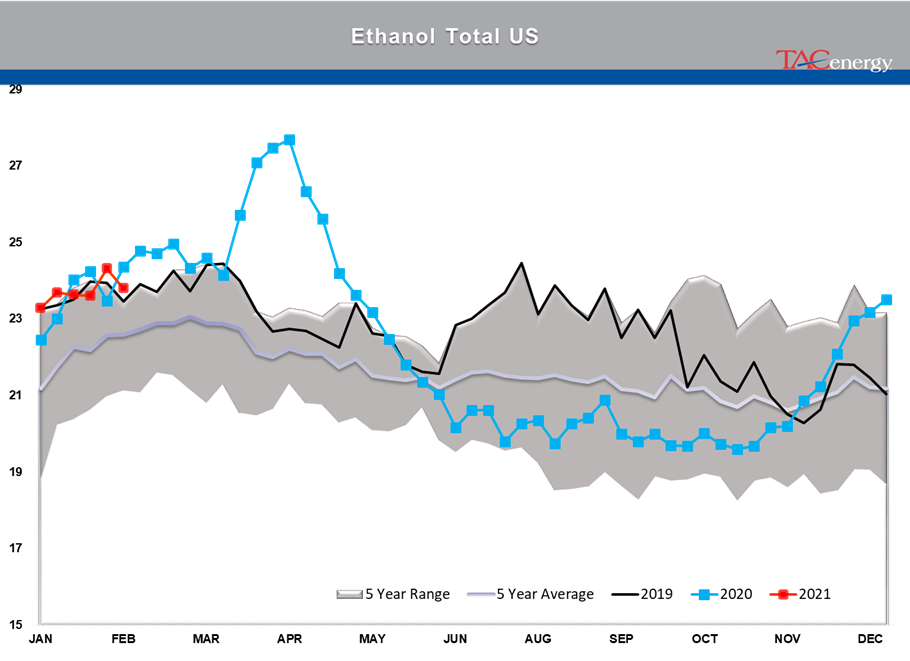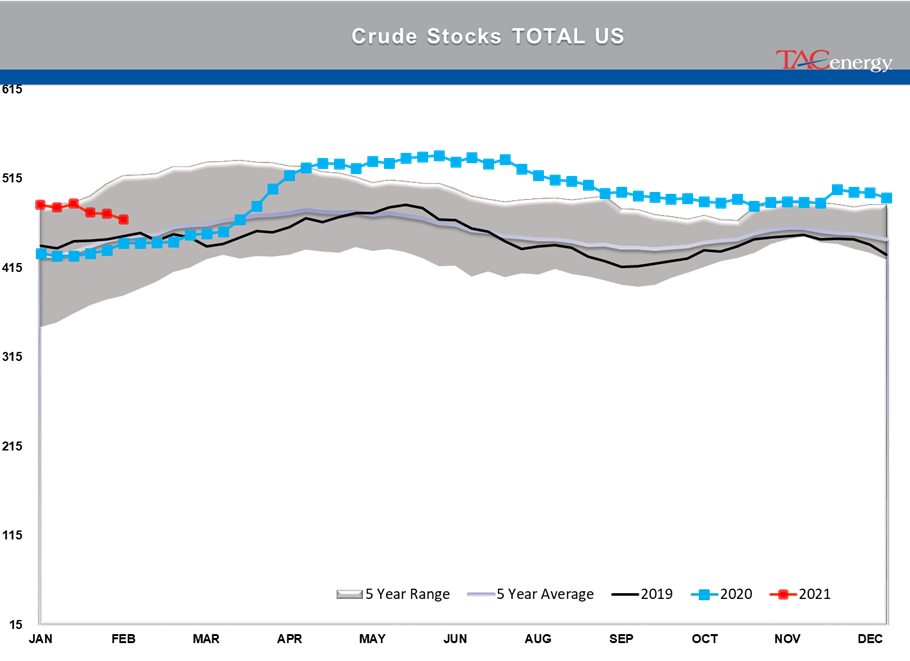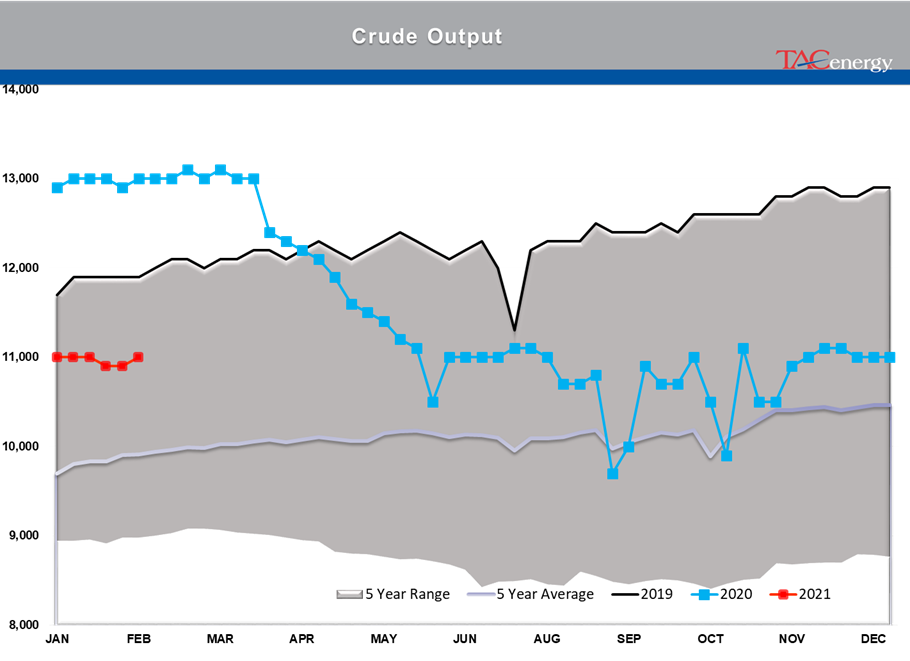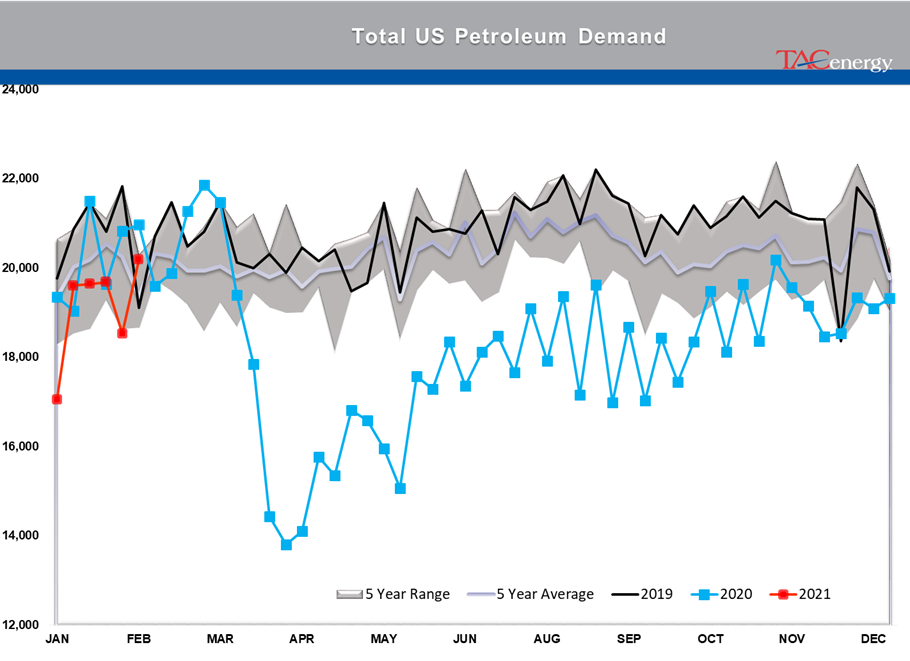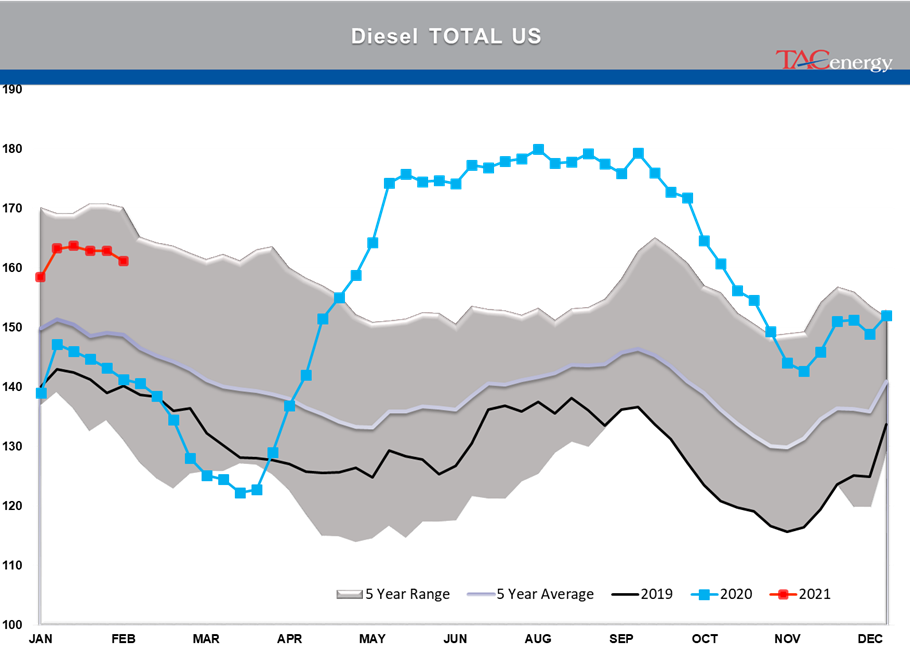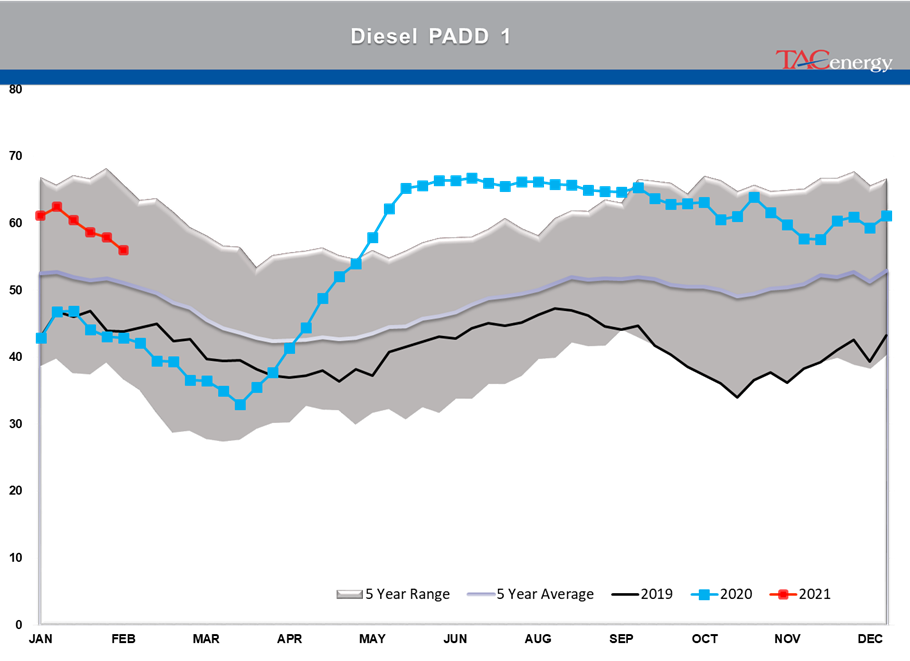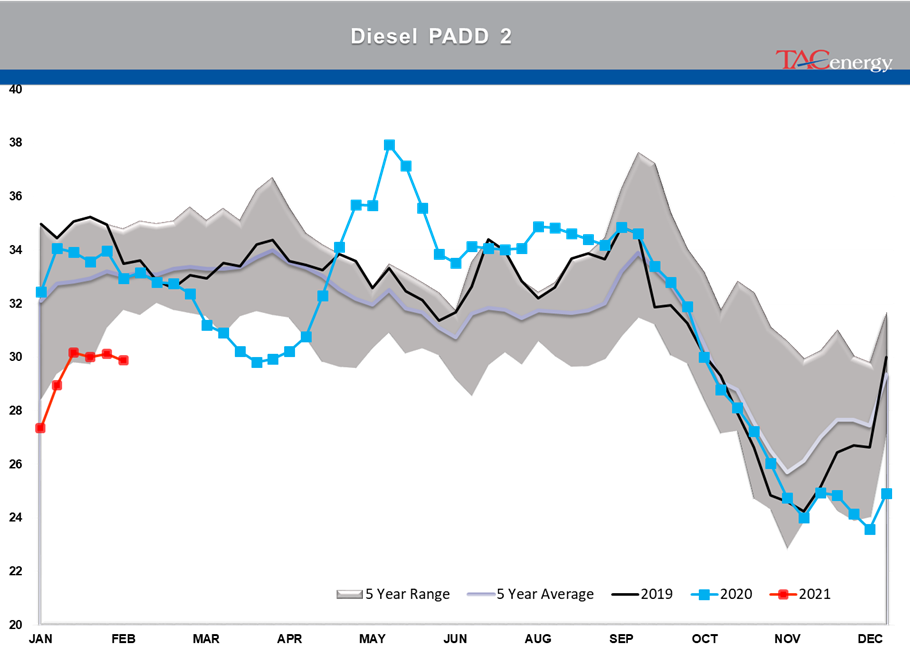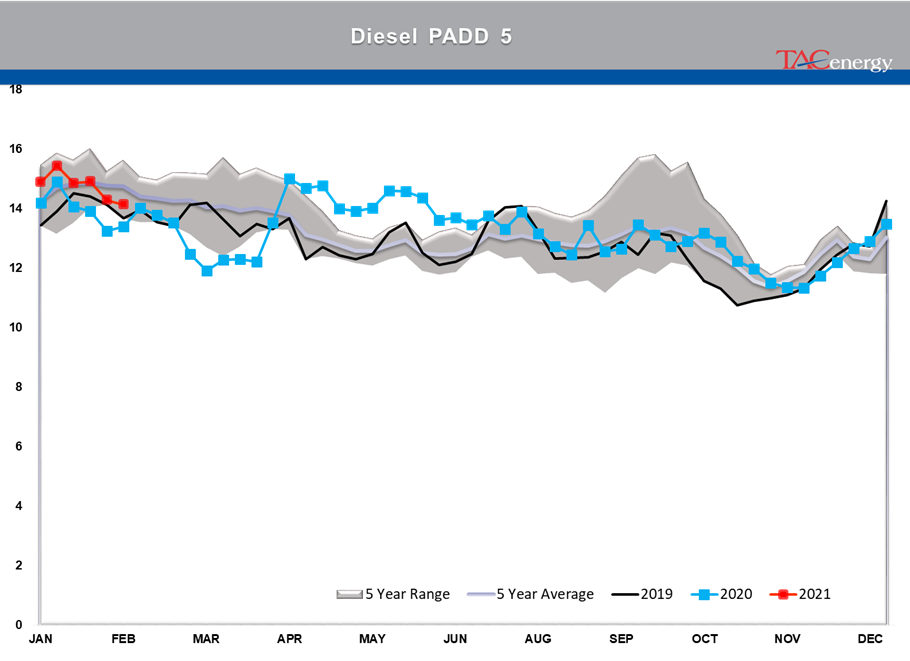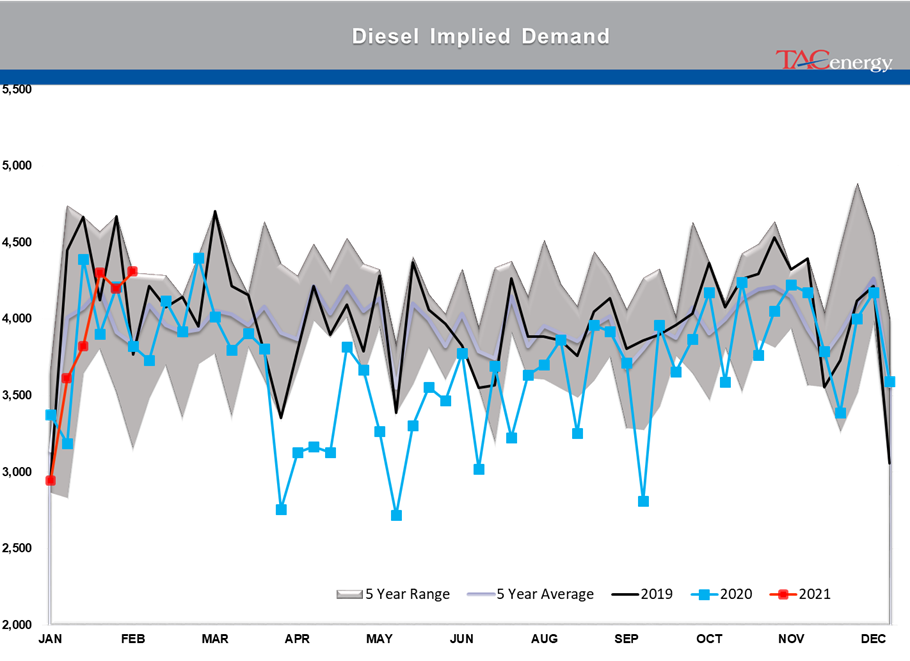Moving Through February Demand Doldrums

Energy prices are seeing a modest pullback to start Thursday after WTI and ULSD futures stretched their winning streak to eight straight sessions on Wednesday, reaching new one-year highs in the process. Some sobering fundamental data seems to be giving the market reason to pause, although the trend-lines are still intact and pointing higher for now, and prices have already bounced off of their overnight lows.
Gasoline prices are faring the worst this week as we move through the February demand doldrums with a parade of winter storms and record-setting cold on tap for the next week.
The DOE’s weekly report didn’t offer any help to the stumble in gasoline prices as another large build in inventories, most of which came in PADD 1, reminded traders that prices are up 65% from three months ago even though inventory levels have swelled by more than 10% during that stretch. The past three weeks alone have seen gasoline stocks move from below the five year average seasonal range to the top end of that range. With demand still struggling, leaving days of supply at the highest levels since the lock-downs last spring, the chances of the normal seasonal drawdown in supplies is looking like a challenge.
Refinery runs picked up across all 5 PADDs last week, which seems to be putting downward pressure on basis values along the coastal markets. Meanwhile mid-continent markets have strengthened this week, as inventories in the Midwest remain below average, and in what could be some expectation that the cold snap could cause some refinery hiccups, particularly for those plants on the southern edge of the region that don’t plan for single digit temps.
RIN values continue to come under heavy selling pressure this week. The new EPA administrator appointee seems to be holding his cards close to the vest, saying in an interview that he planned on reviewing options for the RFS, and not offering any hint on potential obligation changes.
The IEA’s monthly oil market report called the global supply/demand rebalancing “fragile” as the new, more-contagious variants of COVID-19 threatens the demand recovery. The report did make a reduction in its expected total demand for 2021, but only because the actual demand numbers for last year were found to be lower than previous estimates, so the rate of expected change year on year has not changed. The IEA’s report also highlighted that refinery runs in the Atlantic basin are set to lead the recovery in 2021, after they dropped to the lowest level in the 50 years the agency has been tracking those levels.
The EIA’s monthly short term energy outlook highlighted similar concerns for the first half of the year as the IEA’s report, with expectations for a strong recovery in the back half of the year. The STEO highlighted the relatively small spread between winter and summer gasoline grades this year, which are roughly half of what we’ve come to expect. The report suggests the weak demand and low refinery run rates are the cause for this small spread, but failed to mention the EPA’s fuel compliance streamlining that should make summer-grades less expensive this year.
Perhaps the most interesting detail in the February STEO is the comparison of natural gas prices in the U.S. which are hovering around $3/million BTU, vs. other parts of the world that are paying $10-$20. Chart below.
In case you can’t get enough of the monthly reports that remind us COVID has hurt demand, but it should get better eventually, OPEC’s monthly oil market report will be out later this morning.
Click here to download a PDF of today's TACenergy Market Talk.
News & Views
View All
Energy Futures Are Caught Up In Headline Tug-O-War This Morning
Energy futures are caught up in headline tug-o-war this morning with Canadian oil production concerns and a positive US GDP report trying to push prices higher while sinking Chinese demand worries and Gaza ceasefire hopes are applying downward pressure. The latter two seem to be favored more so far this morning with WTI and Brent crude oil futures down ~45 cents per barrel, while gasoline and diesel prices are down about half a cent and two cents, respectively.
No news is good news? Chicago gasoline prices dropped nearly 30 cents yesterday, despite there not being any update on Exxon’s Joliet refinery after further damage was discovered Wednesday. Its tough to say if traders have realized the supply situation isn’t as bad as originally thought or if this historically volatile market is just being itself (aka ‘Chicago being Chicago’).
The rain isn’t letting up along the Texas Gulf Coast today and is forecasted to carry on through the weekend. While much of the greater Houston area is under flood watch, only two refineries are within the (more serious) flood warning area: Marathon’s Galveston Bay and Valero’s Texas City refineries. However, notification that more work is needed at Phillip’s 66 Borger refinery (up in the panhandle) is the only filing we’ve seen come through the TECQ, so far.
Premiums over the tariff on Colonial’s Line 1 (aka linespace value) returned to zero yesterday, and actually traded in the negatives, after its extended run of positive values atypical of this time of year. Line 1’s counterpart, Line 2, which carries distillates from Houston to Greensboro NC, has traded at a discount so far this year, due to the healthy, if not over-, supply of diesel along the eastern seaboard.
Click here to download a PDF of today's TACenergy Market Talk.

WTI And Brent Crude Oil Futures Are Trading ~$1.50 Per Barrel Lower In Pre-Market Trading
The across-the-board drawdown in national energy stockpiles, as reported by the Department of Energy yesterday, stoked bullish sentiment Wednesday and prompt month gasoline, diesel, and crude oil futures published gains on the day. Those gains are being given back this morning.
The surprise rate cut by the People’s Bank of China is being blamed for the selling we are seeing in energy markets this morning. While the interest rate drop in both short- and medium-term loans won’t likely affect energy prices outright, the concern lies in the overall economic health of the world’s second largest economy and crude oil consumer. Prompt month WTI and Brent crude oil futures are trading ~$1.50 per barrel lower in pre-market trading, gasoline and diesel are following suit, shaving off .0400-.0450 per gallon.
Chicagoland RBOB has maintained its 60-cent premium over New York prices through this morning and shows no sign of coming down any time soon. Quite the opposite in fact: the storm damage, which knocked Exxon Mobil’s Joliet refinery offline on 7/15, seems to be more extensive than initially thought, potentially extending the repair time and pushing back the expected return date.
There are three main refineries that feed the Chicago market, the impact from one of them shutting down abruptly can be seen in the charts derived from aforementioned data published by the DOE. Refinery throughput in PADD 2 dropped 183,000 barrels per day, driving gasoline stockpiles in the area down to a new 5-year seasonal low.
While it seems all is quiet on the Atlantic front (for now), America’s Refineryland is forecasted to receive non-stop rain and thunderstorms for the next four days. While it may not be as dramatic as a hurricane, flooding and power outages can shut down refineries, and cities for that matter, all the same, as we learned from Beryl.

